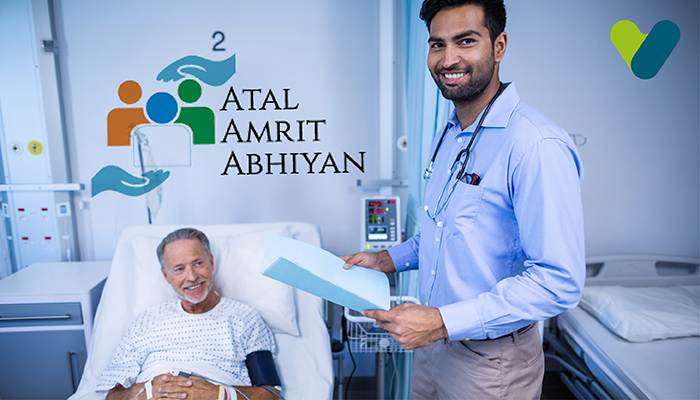The COVID-19 pandemic has been an eye-opener on several fronts. It has time and again put an immense amount of stress on our healthcare system. At the peak, patients found it incredibly difficult to get the right kind of treatment. And the ones who did manage to get adequate treatment, the skyrocketing prices make it a tad more difficult.
Things get much more difficult for individuals who fall under the lower-income category. A short visit to the hospital can result in a big dent in the finances of the family. It is in such cases that the presence of health insurance can come in handy. This is where the State Government of Assam has paved the way for other state governments.
What is Atal Amrit Abhiyan Scheme
The State Government of Assam introduced the Atal Amrit Abhiyan to help all the families with low income to cope up with health-related issues. The scheme was introduced on the 25th of December 2016 and it is still going strong. All the families that are entitled to benefit from Atal Amrit Abhiyan, get a cover of INR 2 lakh.Quick Highlights About Atal Amrit Abhiyan
Here are some of the major highlight points of the Atal Amrit Abhiyan.- Provides health insurance cover of INR 2 Lakhs per year for a family.
- The primary target of the scheme is residents of the state who belong to the BPL category or low-income
- The policy offers cashless treatment for the insured and covers critical care as well.
- The motive of the insurance scheme is to make treatment more affordable.
- There are about 437 diseases covered under Atal Amrit.
Eligibility Criteria for Atal Amrit Abhiyan
As is the case with any other insurance schemes, there are some eligibility criteria for the Atal Amrit Abhiyan as well. And here is all that you need to qualify for the scheme.- All the families who reside in the state with an annual income of less than INR 1.2 lakh or are BPL will get access to free health care under this scheme.
- Families who come under the category of APL and the family’s annual income ranges between INR 1.2 lakh and INR 5 lakh can also avail of the scheme. They can do so by paying a nominal fee of INR 100 per member of the family every year.
- The issuing agency will scrutinize all the documents submitted to support BPL or APL status.
- All individuals either working or retired under State and Central government is not eligible for this scheme.
Documents Required for Atal Amrit Abhiyan
In order to get your hands on the Atal Amrit Card, you need to furnish the following set of documents.- Income certificate for the applicant
- Voter ID card of the application
- EPIC Card (original birth certificate for minors)
- Doctor attested photograph of the patient
- NFSA card (for the ones who have it)
- Other valid documents
Diseases Covered Under Atal Amrit
Here are the six major groups of diseases covered under Atal Amrit Abhiyan. These six groups cover 437 diseases in total.- Cancer
- Neurological Conditions
- Cardiovascular Diseases
- Kidney related diseases
- Burns of different degrees
- Neo-natal diseases
How to Get an Atal Amrit card?
Now that you are aware of the scheme details and the documents required for the scheme, here are the steps that you need to follow to get an Atal Amrit card.- Visit the enrolment centre for the Atal Amrit Abhiyan along with all the required documents
- Get all your documents verified at the centre
- Receive a challan for the scheme
- Processing of fingerprints for the insured
- Issuing of Atal Amrit Card.
To avail benefits of the plan, the patients can visit any of the government-aided hospitals and hospitals empanelled under CGHS. As per government statistics, till march 23rd 2020, there have been 15,899,339 enrolments under the BPL category, 245,491 enrolments under the APL category and about 85,717 patients have been treated under this scheme.
The Atal Amrit card ensures that the beneficiaries receive cashless treatment for any of the 437 diseases that the scheme covers. The scheme is not a reimbursement model based scheme. The government of Assam is also pushing to get more hospitals empanelled, thereby making healthcare even more accessible for its residents.


